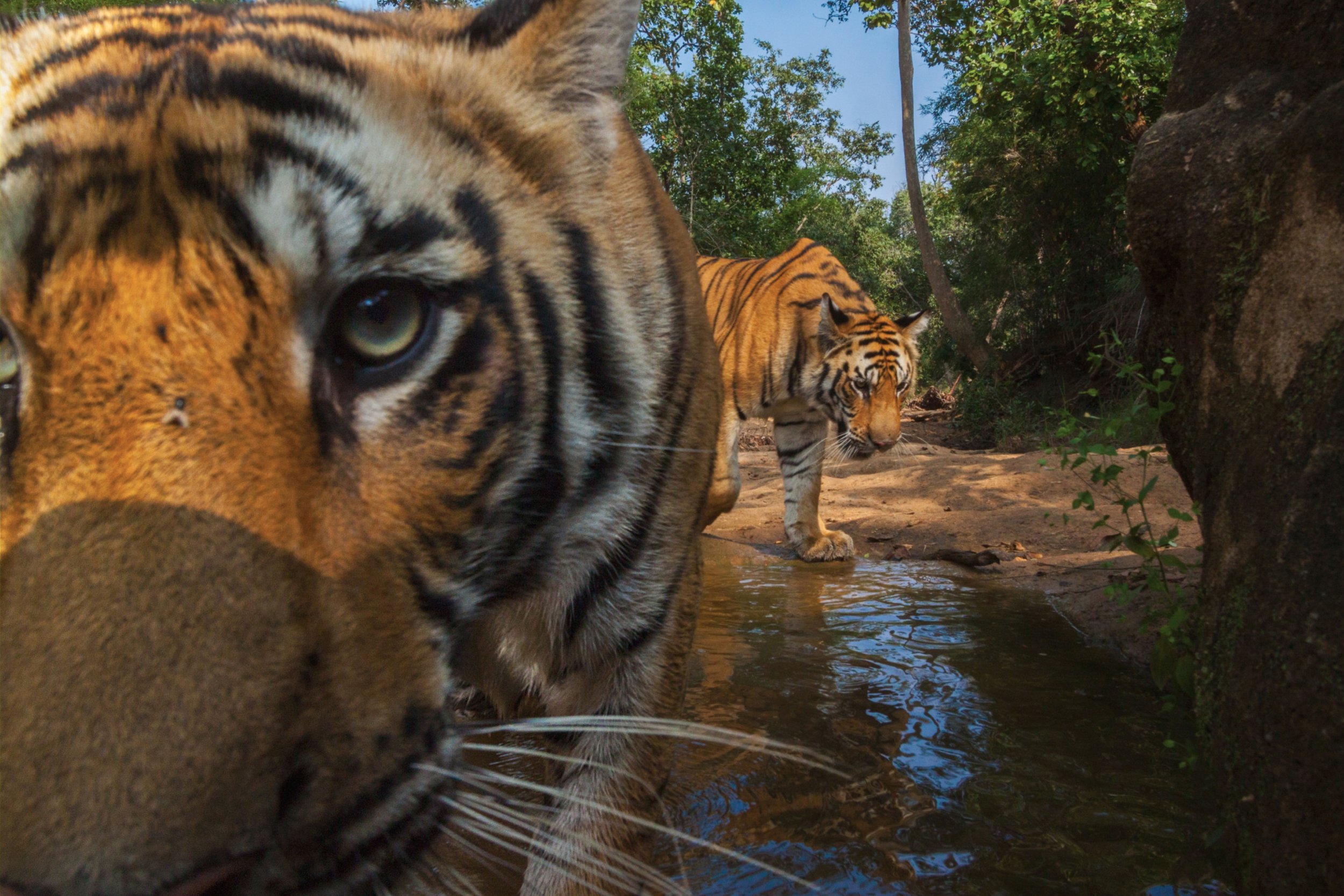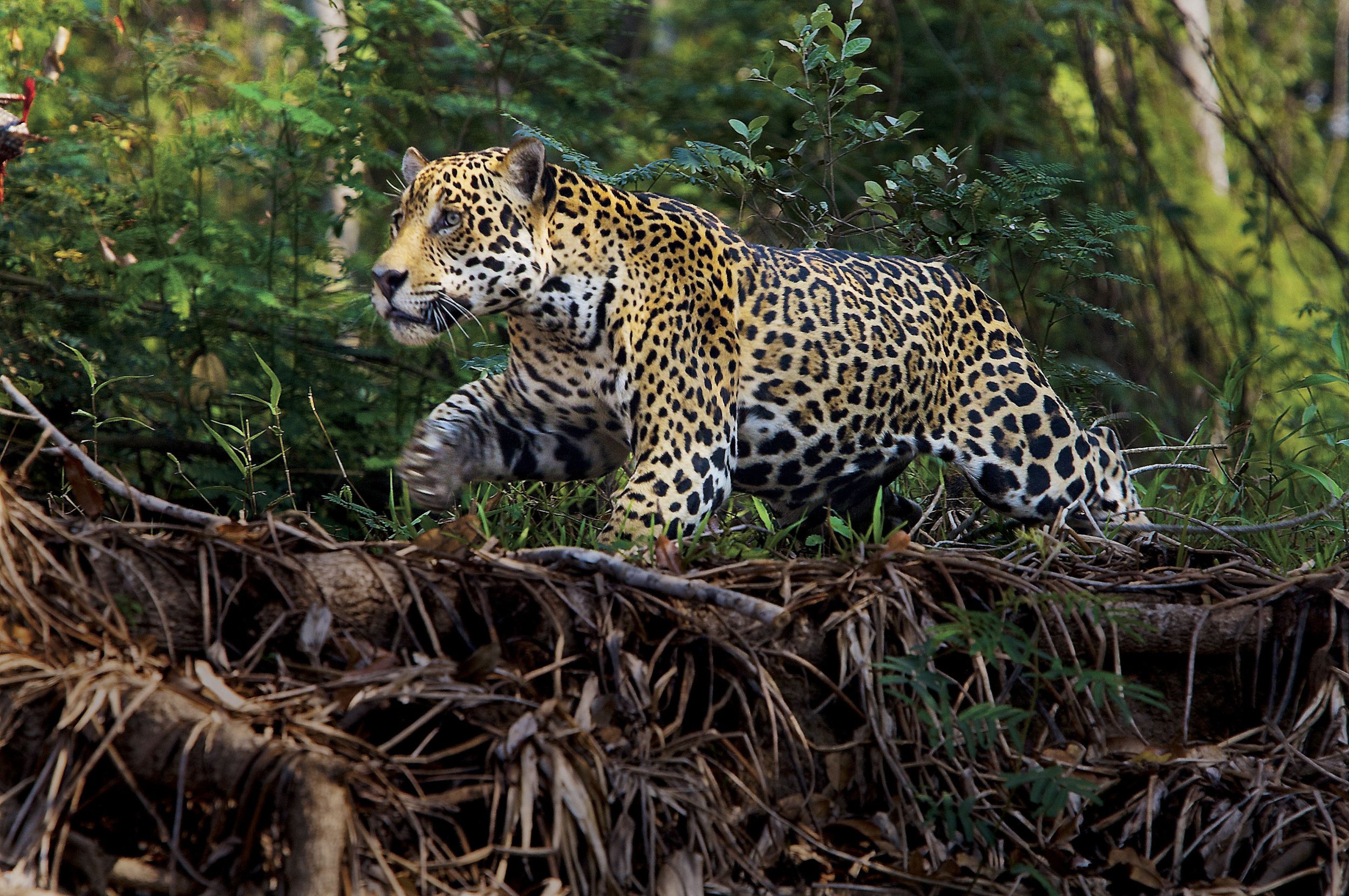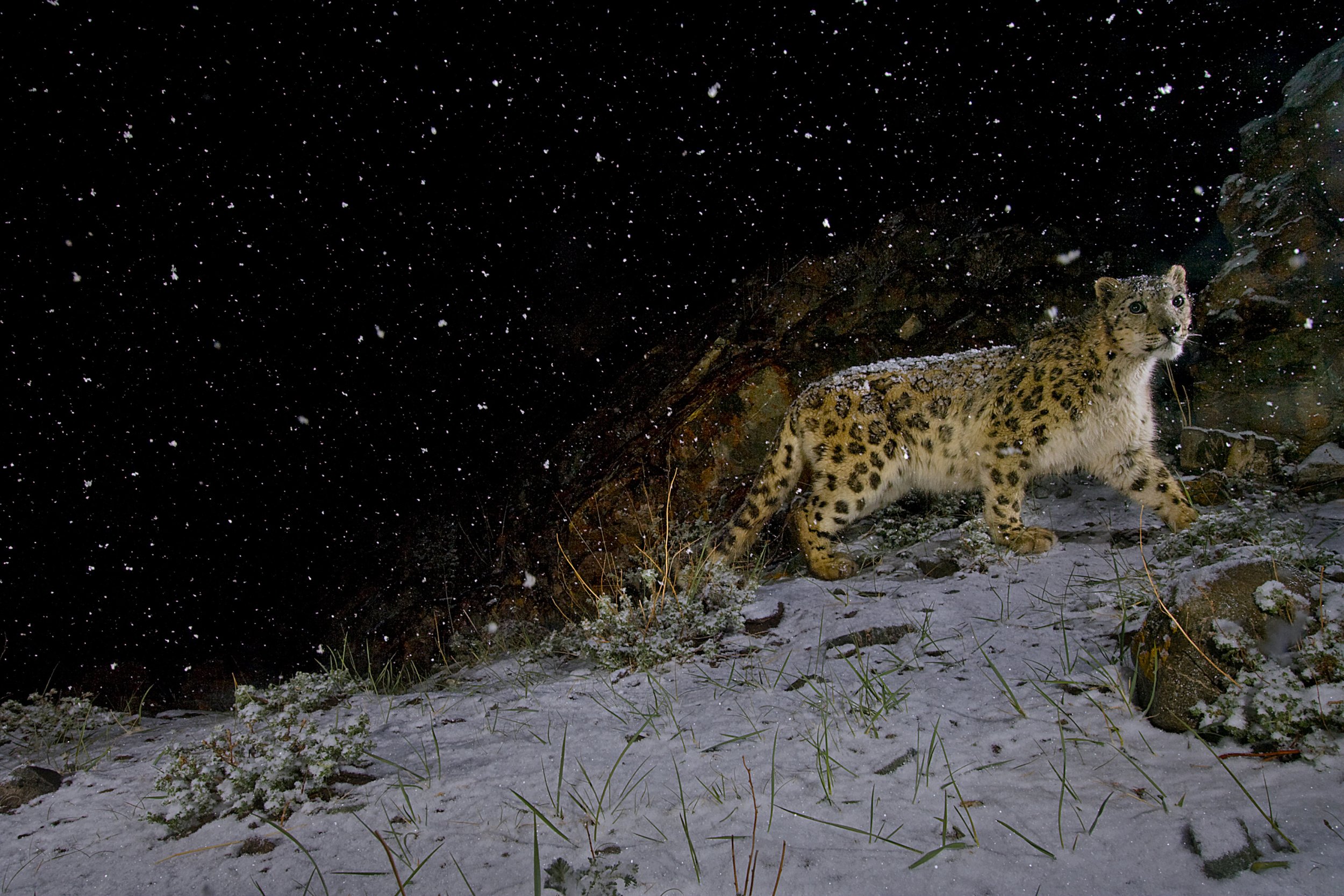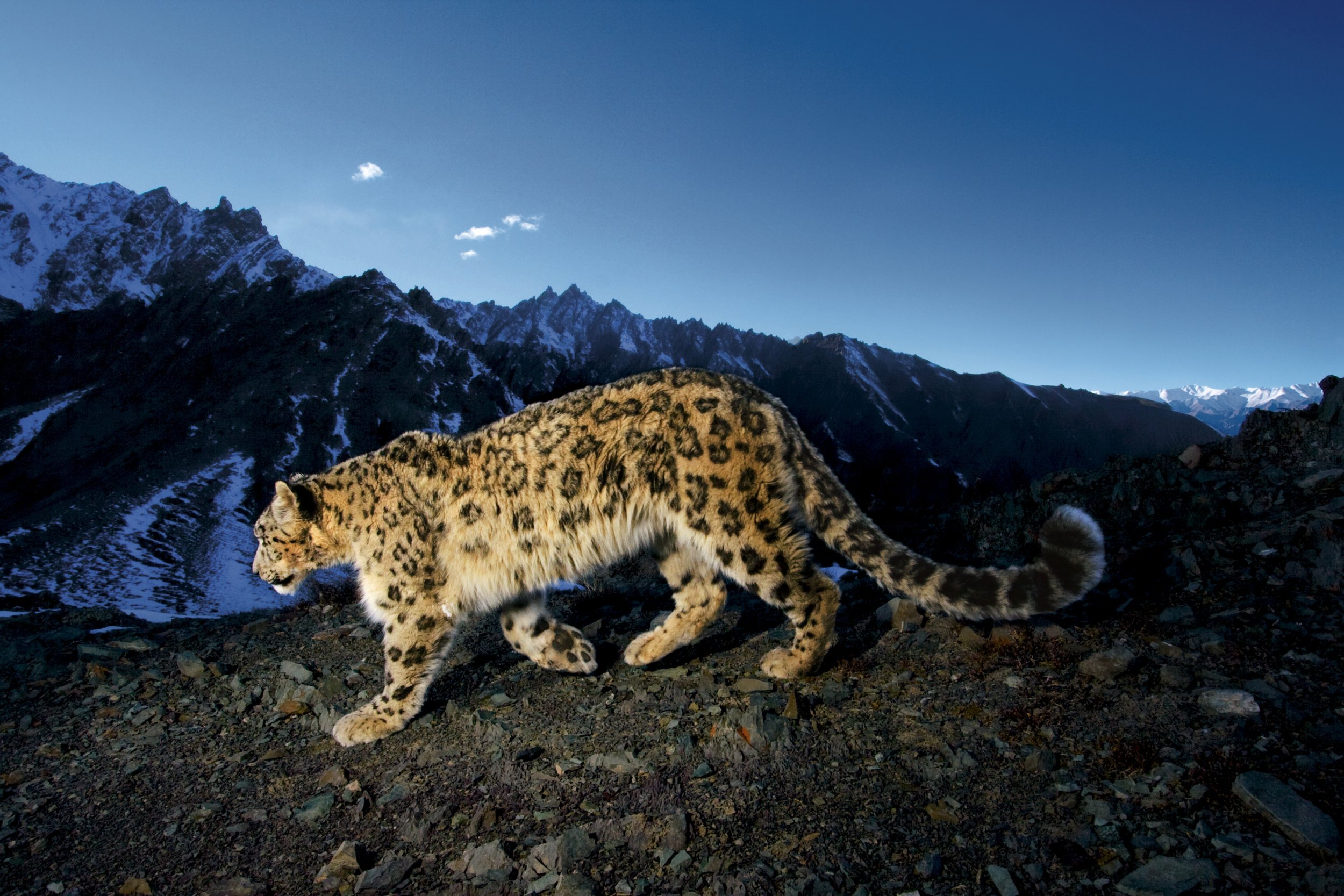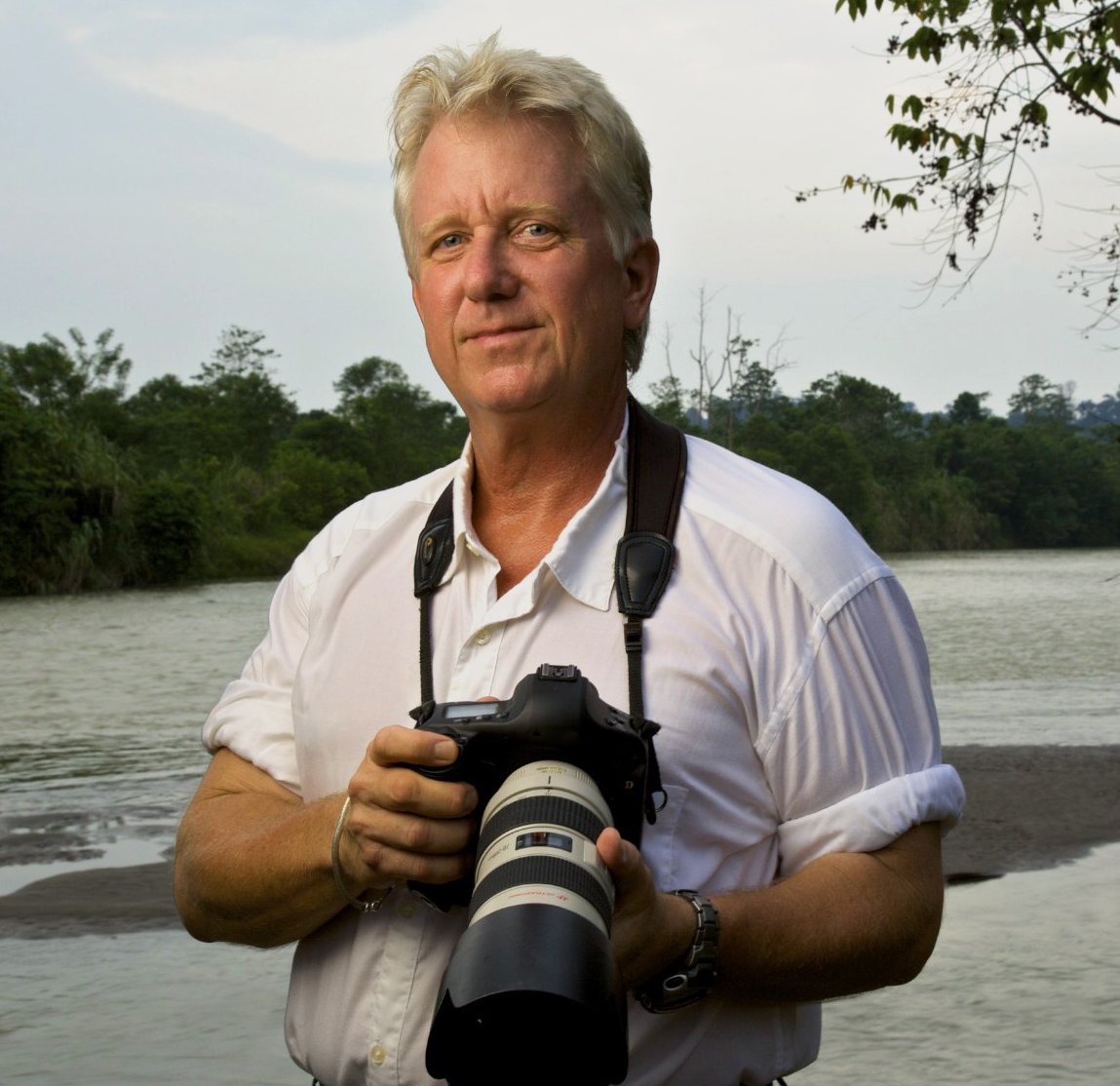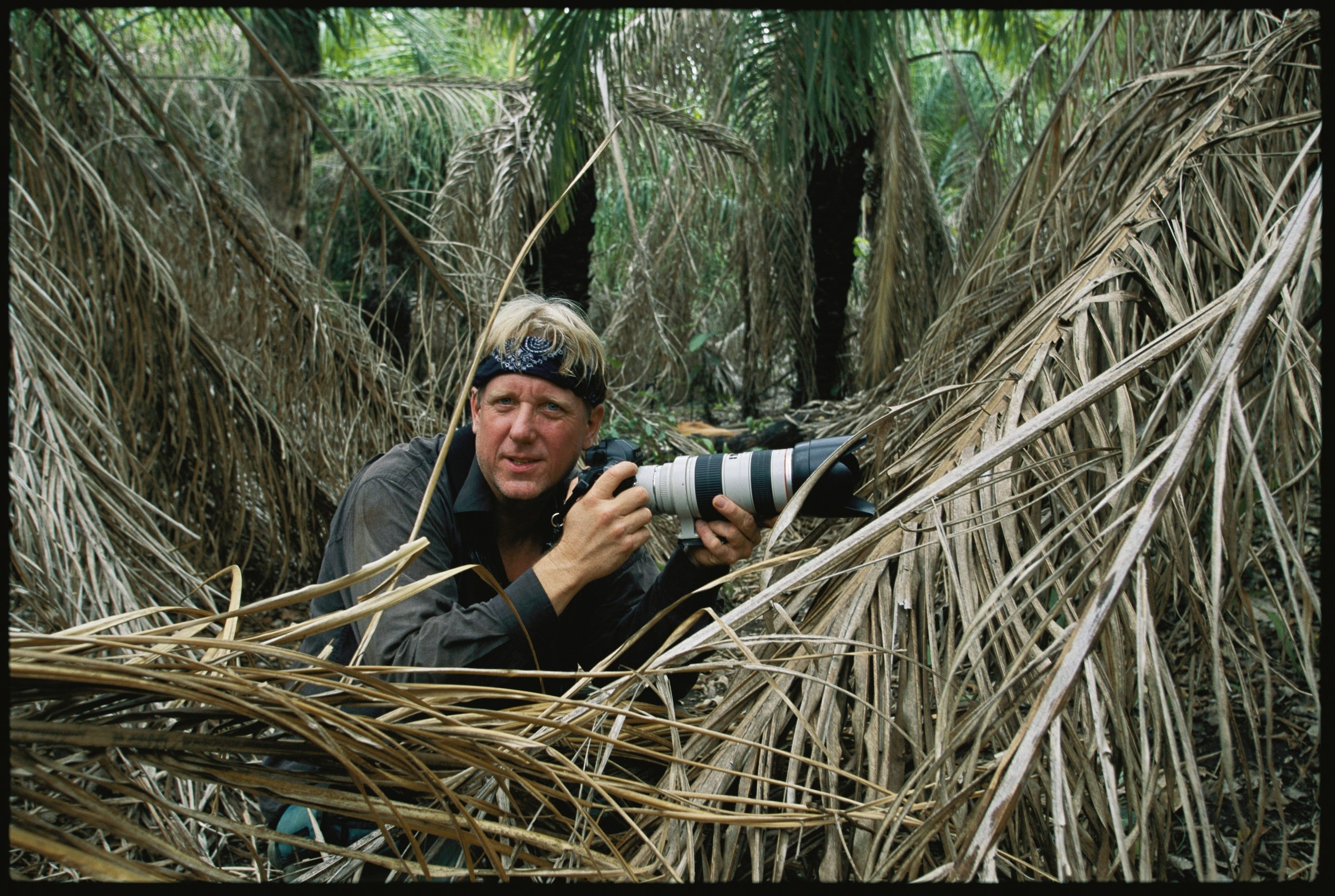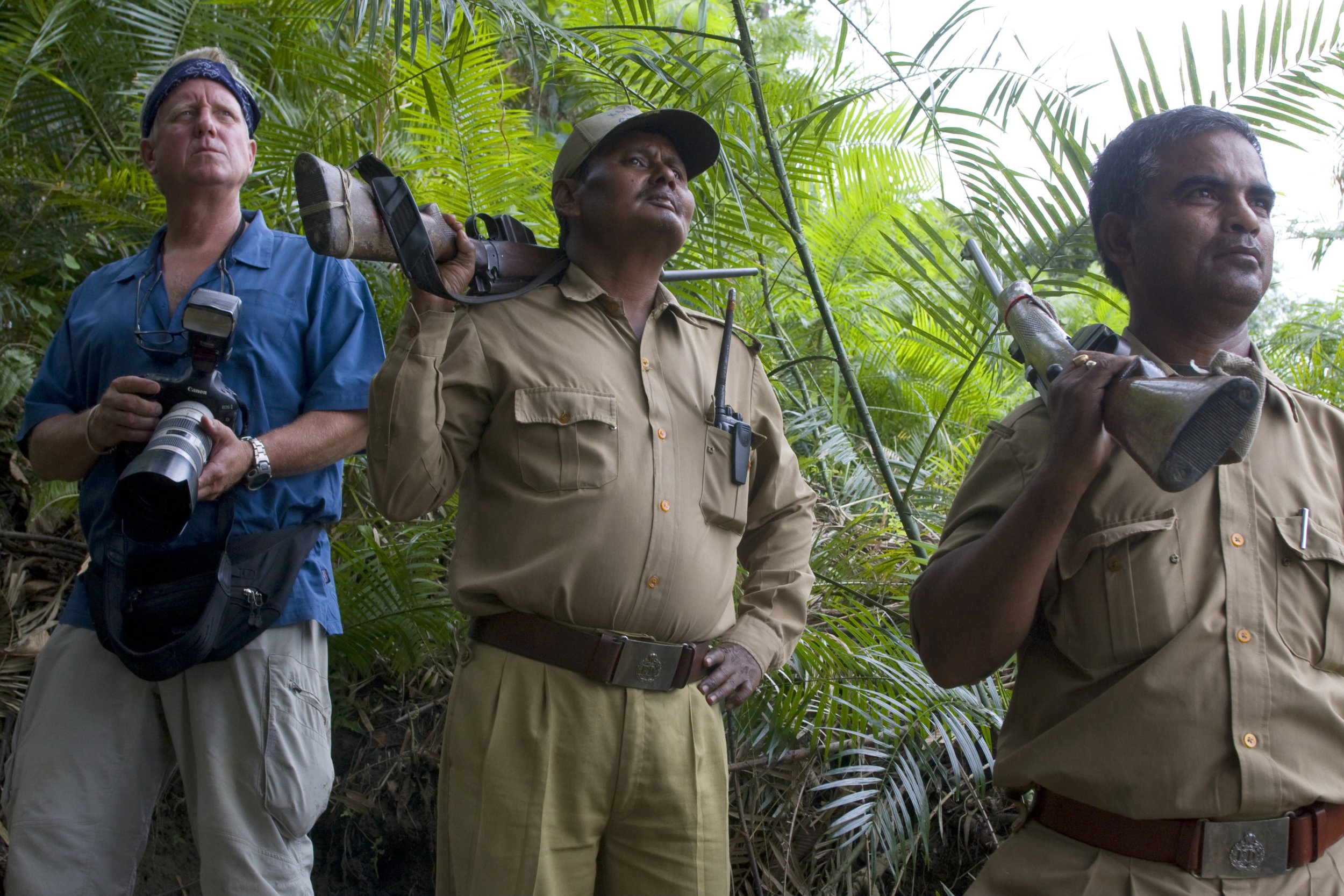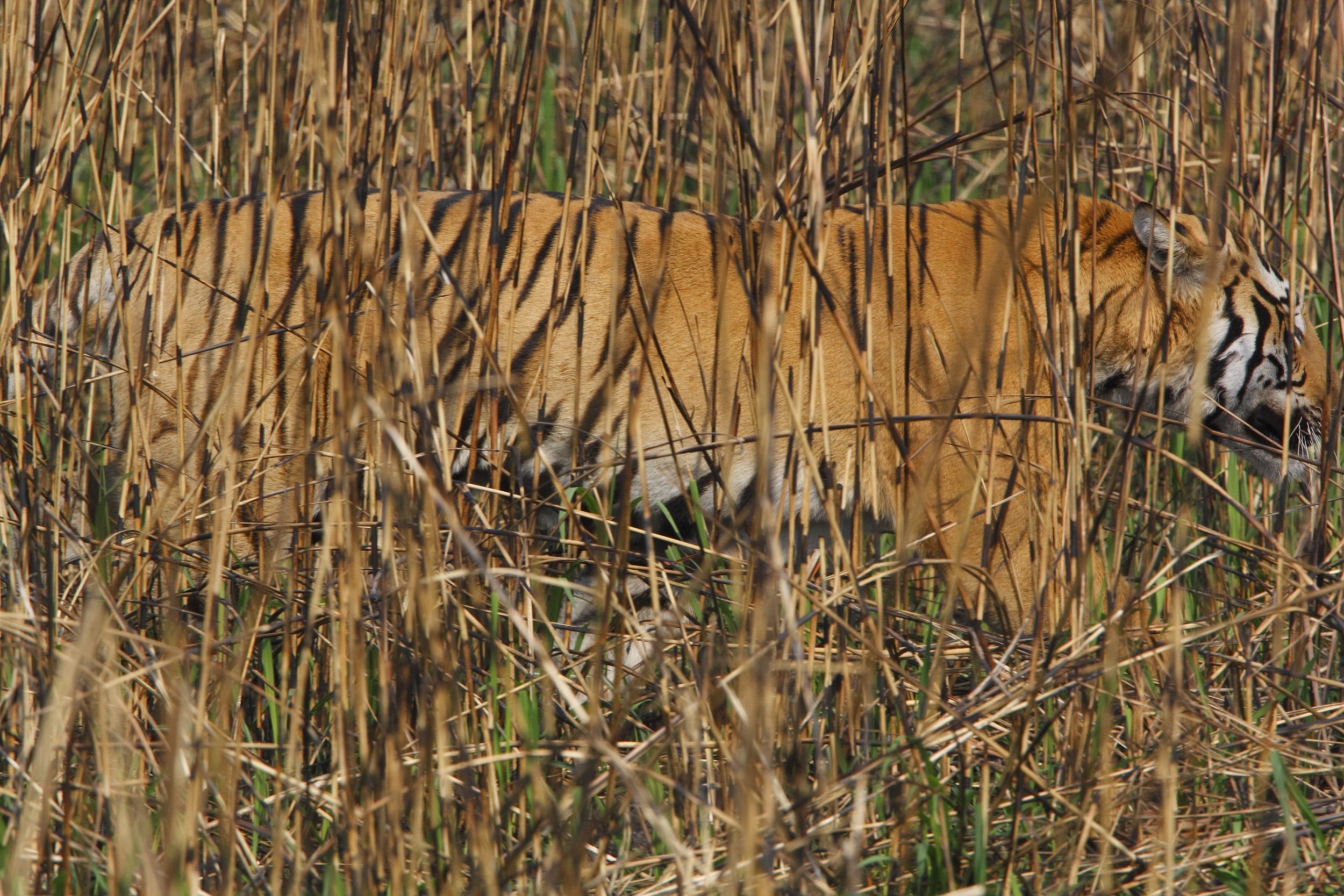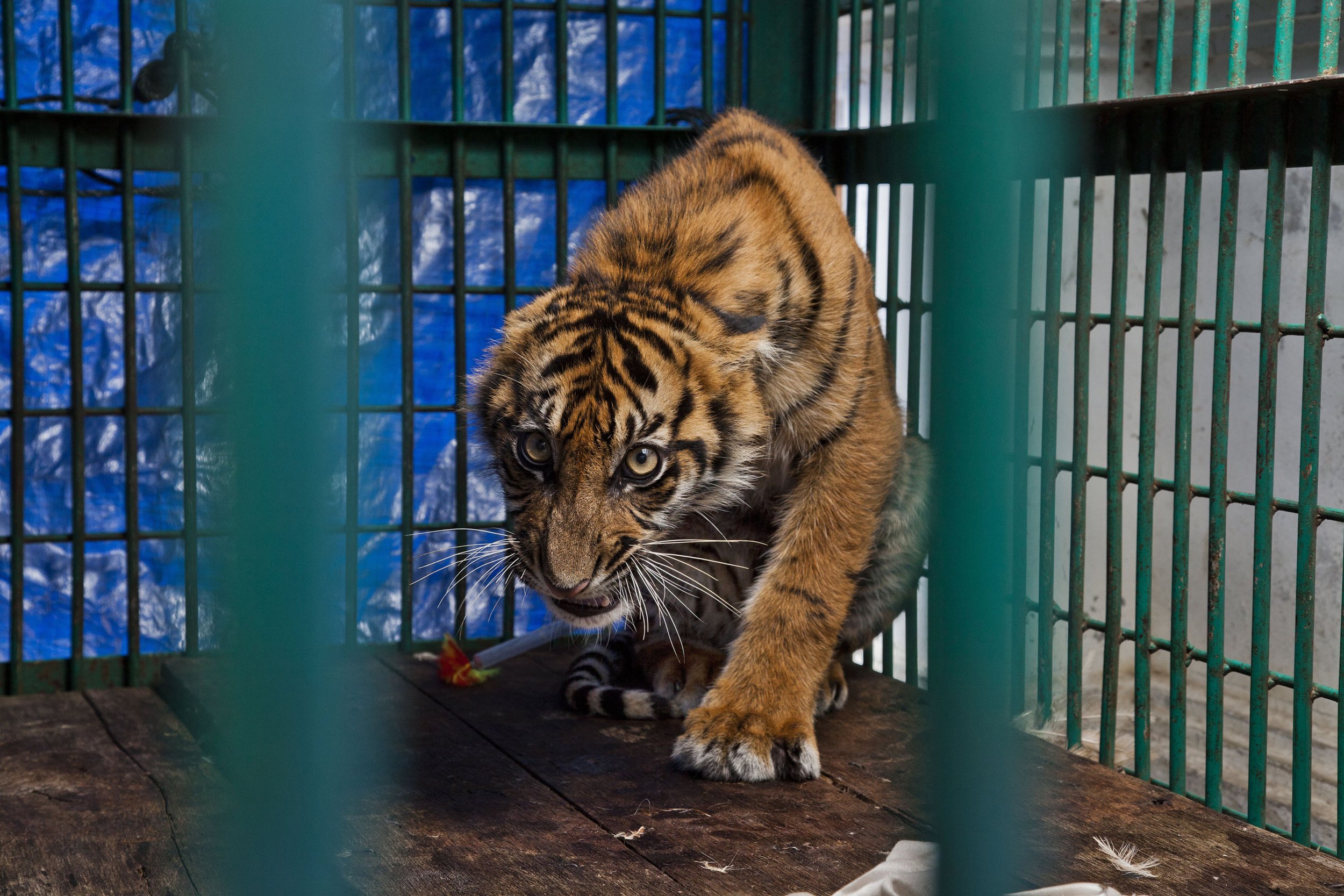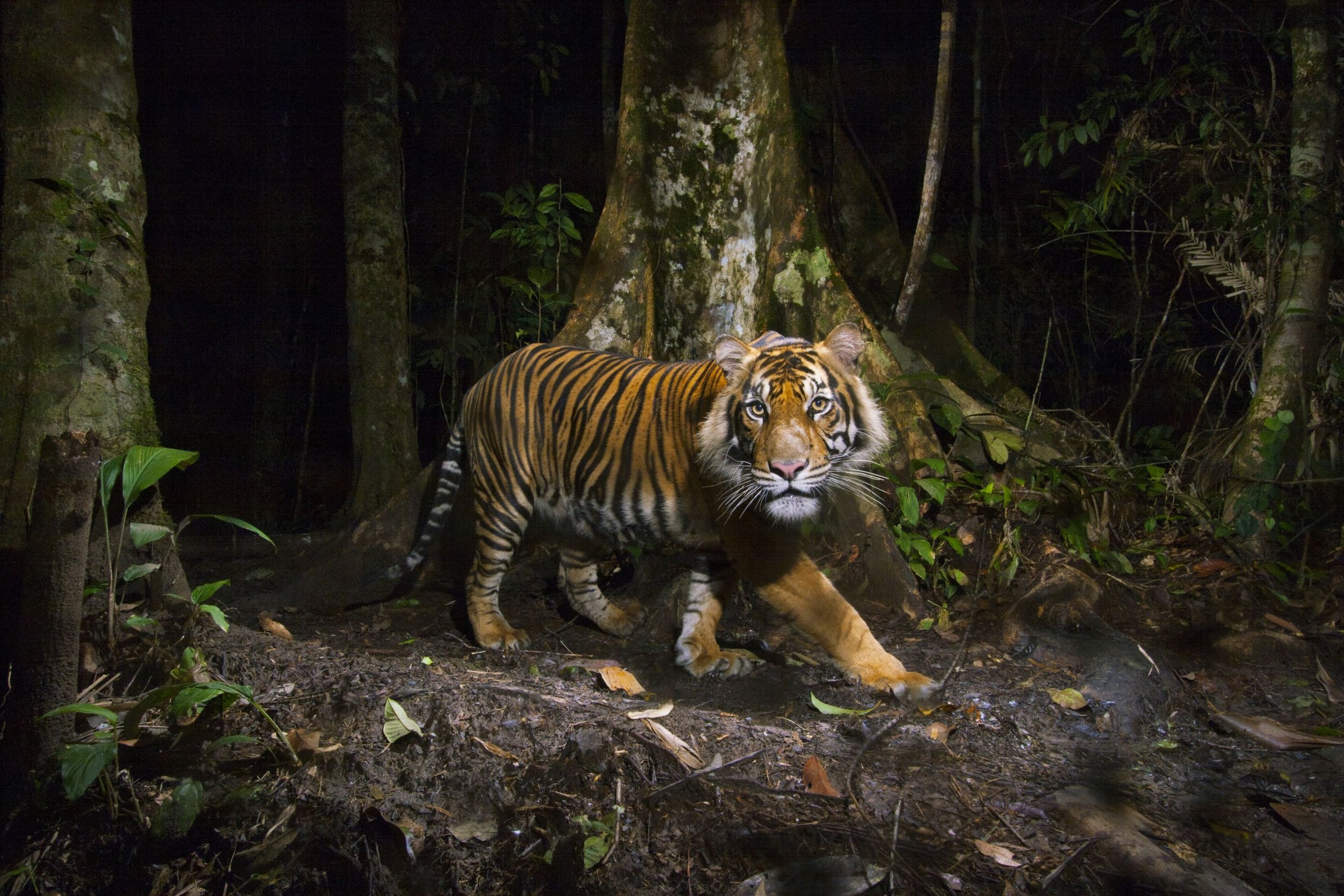"On the Trail of Big Cats" with Steve Winter | National Geographic Live at Auditorium Theatre
Feature
(Originally published on Chicago Stage Standard)
Have you ever wondered just how they capture those incredible moments on nature programs when the predator finally pounces on its prey? One photographer has spent years honing his craft in the art of finding apex predators and capturing their image to bring us closer to these creatures in the wild. The Auditorium Theatre’s 2019-20 National Geographic Live Series continued on January 26, 2020 with "On the Trail of Big Cats," featuring National Geographic wildlife photographer Steve Winter. From trekking the Himalayas in search of snow leopards and tracking the elusive jaguar through Latin American jungles to pursuing the American cougar throughout the Hollywood Hills, Winter has ventured far and wide to come face to face with his subjects.
The evening was partnered with the Field Museum and two experts were onsite in the lobby with artifacts and pelts to educate audiences on wild felines. This family friendly program was definitely for cat lovers and adventurers alike with a huge turnout to prove the enthusiasm for these great animals. The enriching evening was packed with information, statistics, humor and a fascinating career of one man on a mission to spark a few hearts and minds about big cat conservation.
Winter has been a National Geographic photographer since 1991. He has been named the BBC Wildlife Photographer of the Year and BBC Wildlife Photojournalist of the Year and is the two-time winner of Picture of the Year International's Global Vision Award. He also received first prize in the nature story category from World Press Photo in 2008 and 2014. He lectures globally on photography and conservation issues and has appeared on CBS Nightly News, 60 Minutes, NPR, BBC, and CNN. In November 2013, National Geographic published Winter's photography book Tigers Forever: Saving the World's Most Endangered Cat.
I have been to a few of these National Geographic Live programming and it was nice that this evening included close captioning with Winter’s presentation. Not only were there stunning visuals to gaze at, but impressive video and sound clips that created a fully sensational experience in bringing the far reaches of the world right into downtown Chicago.
In the high mountains of India, Winter next described his efforts to find the elusive snow leopard. Within the first three days, the crew were lucky enough to spot several cats on the upper ridge without much time to capture any significant images. Unfortunately, that was the only time they saw the cats for the next six months.
On the technical side of these great expeditions, Winter explained how the process really becomes a waiting game with patience being key. Finding those knowledgeable with the research side is incredibly valuable in tracking down these cats through behavior patterns in order to set up camera traps. Camera traps are remotely activated with motion or infrared sensors, or even a laser beam as the trigger. When the beam is broken the camera goes off capturing whatever is in frame. This obviously means pre-planning your image’s composition and framing. The forethought required makes this process long and arduous because if one piece of this trap is off, it could mean waiting even longer for the ideal animal to come through after fixing the framing, laser beam height, etc.
For the case of the snow leopard after 10 months of waiting and positioning his equipment every so many days, Winter finally got his shot, which can now be found on any Mac device as a screensaver/background. The image ran with the international release of Apple’s 2009 Mac Operating System titled Snow Leopard.
The technical and passion collide in Winter’s work. Winter strives to find new innovative ways to capture big cats and their behaviors, even so far as a robotic camera and poised cameras from treetops. In the United States, Winter photographed P22, a cougar making Griffith Park in downtown Los Angeles home. His dedication to his craft lead to one of the most impressive non-composite images: P22 walking in front of the Hollywood sign. The discussion of how P22 got to Griffith Park was impressive and the cat crossed two of the busiest highways in America leading LA to invest in building a wildlife overpass to help eliminate human obstruction for these animals.
As an artist, he discusses the gut wrenching feeling of not getting the “right” shot. One of Winter’s images of a cat walking away from the camera had him crestfallen, yet his editor loved the image and they ended up doing a piece all on this particular cat’s tail length and the science behind how a cat’s tale controls the animals balance. This is a prime example for artists to remember as we are creating; sometimes things shift focus from our intended vision, but that doesn’t make it have any less worth.
Being a leader in the National Geographic Big Cat Initiative, Winter shares the shocking statistic that there are more tigers in the United States than there are in the wild. How? That is due to state fairs, personal pets and other reasons that will all come to life in Winter’s most recent project you can read about here. There are also threats in the large cats natural eastern habitats due to the demand for traditional Chinese medicines, poachers and deforestation. As stated before, a threat from monetary based tourism that has a dark underbelly of tiger trafficking. The recent stories from the Thai Tiger Temple is stuff of nightmares and has thankfully been shut down, but the long arduous fight against places like that is still far from over. If you are interested in reading more about that happened and the aftermath, please see the links below.
In closing, a simple question was asked: why should we care? Winter’s response was “because they are living beings and they have a right to walk the face of the earth.” In our virtual society, there is no reason for ignorance at the danger our natural world is in. Planet Earth, National Geographic and Disney+ are just a few big name resources we have to bringing ourselves back to nature. The sooner we put back value into our environment and the creatures in it, the more our planet will begin taking steps towards thriving once more. There is no planet B.
National Geographic Live continues this spring with
Adventures Among Orangutans with Photographer Tim Laman and Scientist Cheryl Knott - Mar 10, 2020Ocean Soul with Photographer Brian Skerry - May 5, 2020
Learn More
To learn more about these exciting opportunities at the Auditorium Theatre with National Geographic, please visit www.auditoriumtheatre.org/ For more information about National Geographic Live visit NatGeoLive.com.
Trophy Hunting Statistics
https://www.humanesociety.org/all-our-fights/banning-trophy-hunting
Big Cats Next Door
https://www.nationalgeographic.com/animals/2019/11/tigers-in-the-united-states-outnumber-those-in-the-wild-feature/
Thai Tiger Temple Aftermath
https://www.nationalgeographic.com/news/2017/02/wildlife-watch-tiger-temple-monks-trafficking-zoo/
Donate to Tiger Conservation in India
To donate to the conservation of Tigers in India a creditable and reputable organization is The Wildlife Protection Society of India founded by Belinda Wright, who is an award-wining wildlife photographer and filmmaker and conservationist. http://www.wpsi-india.org/wpsi/index.php
